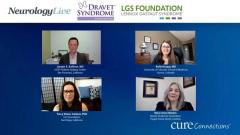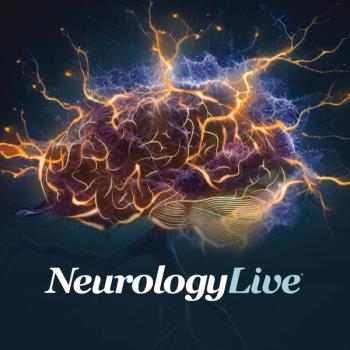
Resources for Dravet Syndrome and LGS
Kelly Knupp, MD; Mary Anne Meskis; and Tracy Dixon-Salazar, PhD, share education around patient advocacy and support groups as well as other resources for patients with Dravet syndrome or LGS.
Episodes in this series

Joseph E. Sullivan, MD: To bring this full circle we're lucky to have Mary Anne and Tracy who are 2 moms of now young adults with developmental epileptic encephalopathy and yet you somehow found the time and energy to form a patient advocacy group and it’s been a testament to you and to other patient advocacy groups that have allowed Kelly and I and our colleagues to work as a team and have opportunities to participate in these clinical trials and to come to different conferences where we get to meet the families and meet other colleagues so thank you for that. Kelly, I'm curious with this wealth of resources that we have just with these 2 advocacy groups in our presence today, how else do you tell your patients about what other resources there are beyond your own institution?
Kelly Knupp, MD: It sometimes depends on what the diagnosis is. For a patient with Dravet syndrome I'm going to share as many Dravet resources as I can and for somebody with Lennox-Gastaut I'm going to share those resources. For somebody who has a new diagnosis particularly if it's rare and we haven't been able to find a family support group for them that's one of the first things that our genetic counselors do is, is there a family support group for this diagnosis and provide that information. If that's not available, I encourage families to reach out through their epilepsy communities and try to identify who else may have this diagnosis because if it's so rare that I'm only seeing one patient I'm not going to know what's common across this. Academically speaking when there are 30 patients with a diagnosis, only the first 2 get published in the literature and unless somebody is coordinating that whole group to get information from all 30 of them we don't even know if there are 30 people out there with that diagnosis. I don't do social media as you guys probably now but my searching and the academic literature is a little bit disadvantaged outside of those first case reports, and I find that families with their motivation are able to quickly find families across the world who have that diagnosis and I encourage them to do that because as those families talk to each other and nobody knows your children better than you do. I may be asking standard questions about your seizures and your gait and your constipation but as families get together they talk about the nuances that we may not think about in clinic and they identify the nuances that are common amongst their children and I find that an incredible resource both for the families and for me when they come back and say I talked to 10 families and 8 of them are lamotrigine, maybe we should give it a try. I'm like I'm in, let's talk about adverse effects and we'll figure it out. As you had said earlier it takes a village and we have to learn from each other, and we have to be open to that too.
Joseph E. Sullivan, MD: Absolutely.
Kelly Knupp, MD: There are resources out there that are pretty standard resources. NIH [National Institutes of Health] has rare disease pages. NORD [National Organization for Rare Disorders, Inc.] has rare disease information. The Epilepsy Foundation often has good resources but for some of the super rare disorders they may not be as organized yet and may not have as many clear resources available.
Joseph E. Sullivan, MD: I'm curious if we do have a patient with LGS or with Dravet, Tracy and Mary Anne, and we give just the link to the website. What does that typical process look like for a new patient? I mean we have different levels of tech savviness. Some people may get overwhelmed by the website. I'm not on social media either, Kelly, I understand it's easy. I don't know. How does it look on the foundation side when you have a flurry of incoming new families?
Mary Anne Meskis: I would say probably our LGS foundation are similar in that we've worked hard to make sure we have a lot of resources available for families, educational videos or other opportunities in person but the biggest thing that both groups rely on are support groups. Just like Kelly said there's nothing like having another family that's walked that journey that can give advice or can answer a question that you have. We've also found trying to break up those opportunities in a variety of ways is important. We have families that are just not comfortable traveling because of the current medical condition of their child or they're afraid to go too far from their hospital so we try to give them a variety of ways that they can get the information that they need to provide the best medical care for their child without them feeling overwhelmed.
Tracy Dixon-Salazar, PhD: It's the same for us and we have similar programs in some ways to the Dravet Syndrome Foundation. For us it's connecting a family with a regional ambassador or a patient navigator. Our ambassadors are in specific regions. We have 50 ambassadors in 7 different countries across the world and it's more answering questions like who do you see in our community, how do you navigate social security, what do you do with IEPs in that region. Then we have navigators that are like I'm considering this treatment. I am dealing with this specific issue so it's a very topical connection that we make in addition to our support groups. We always just say because we're living the same journey and LGS straddles all the DEEs because pretty much any ideology that you can think of that causes a DEE, a subset of them seem to evolve into LGS. There's no one DEE I think is probably the most well-known but there's no one DEE where all the patients get LGS. We seem to be an endpoint, a final common pathway or maybe not even final but a common pathway for a lot of them. We always just say, listen we divide on the science. The science is going to be different. I cannot pay attention to all 150 plus DEE genes and dedicate my time to those because that's just a subset of our bigger LGS and we're over here focusing on end stage LGS at the sort of the one that becomes a pathway, but you are welcome into our programs because we're on the same journey. We're navigating school issues, community issues, we're navigating the same medical systems, we see the same doctors, we're on the same treatments, we're in clinical trials together, we're at the same conferences so we try to be as inclusive as we can. We also try to make sure that when people come into our group now, you're dealing with frequent intractable seizures. This is not the place to send a newly diagnosed DEE patient; our community is not the place. You do not talk about LGS with IS patients until you have to because it's a very devastated population, but we do try to be inclusive, and you can learn from these other groups. Even if you're LGS-like you can come in and be a part of our community and learn and be supported.
Joseph E. Sullivan, MD: Dravet Syndrome Foundation as well Mary Anne, right? I mean we try to be inclusive of the SCN1A epilepsies because there is some overlap there.
Transcript Edited for Clarity
Newsletter
Keep your finger on the pulse of neurology—subscribe to NeurologyLive for expert interviews, new data, and breakthrough treatment updates.









































